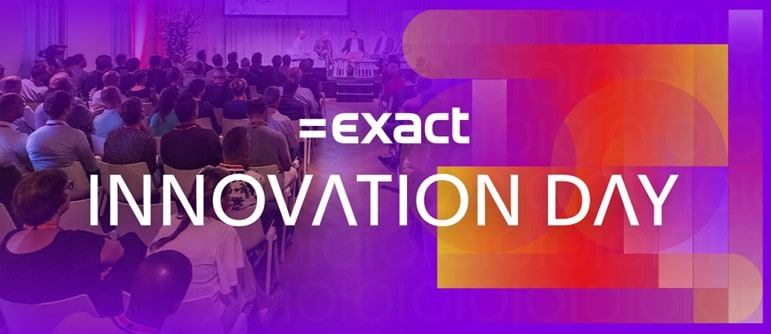Vernieuwde functionaliteit: documenten uploaden Exact Online
Wellicht heeft u het al ontdekt, de functionaliteit om documenten te uploaden is onlangs gewijzigd. Het uploaden van bijvoorbeeld uw facturen, verkooporders, offertes, brieven, contracten etc. is hierdoor eenvoudiger geworden. In deze blogpost wordt uitgelegd wat er is veranderd.
Om een document te uploaden klikt u bovenin Exact Online op het document icoon en vervolgens op ‘Nieuw document’. Tot voorkort was het noodzakelijk eerst een type te kiezen. Nu verschijnt er een pop-up, waar u direct een document kunt uploaden:
Deze pop-up verschijnt ook wanneer u vanuit een kaart (bijvoorbeeld de relatiekaart, projectkaart of medewerkerskaart) een document wilt uploaden.
Waar u eerder nog maar één bestand tegelijk kon uploaden, kunt u nu in één keer tot maximaal 15 bestanden naar Exact Online versturen (max. 26 MB per bestand).
Wat ook nieuw is, is de ‘drag and drop’ functionaliteit. U kunt een bestand vanaf een willekeurige locatie op uw computer selecteren en met uw muis naar het documentveld slepen. Zodra u uw muis loslaat, is het bestand toegevoegd en zou u hem direct kunnen uploaden.
Deze functionaliteit werkt echter alleen met Internet Explorer 10 of hoger, Mozilla FireFox, Google Chrome en Safari 6 of hoger. Uiteraard kunt u ook gewoon uw documenten opzoeken en toevoegen door op ‘Klik om te bladeren’ te klikken.
Voordat u het document daadwerkelijk upload door op de knop ‘Bewaren’ te klikken, kunt u nog aanvullende informatie toevoegen. Hiervoor klikt u onder het documentveld op het pijltje naast ‘Meer velden’. Afhankelijk van het type dat u gekozen heeft, verschijnen hier een aantal invulvelden:
Na het bewaren van uw document(en), verdwijnt de pop-up. U vindt uw document(en) terug door weer op het document icoon te klikken en vervolgens te kiezen voor ‘Overzicht documenten’.
Wanneer u een document upload waar een boeking van gemaakt dient te worden, zult u merken dat u niet meer direct kunt boeken na het uploaden. U kunt in dit geval uw document het beste uploaden via [‘Document icoon’, Overzicht documenten, Nieuw]. Hier klikt u op het betreffende type waarna u in het scherm ‘Onderhoud: Document’ terecht komt. Hier kunt u op de zelfde wijze, zoals hierboven beschreven, uw document(en) toevoegen en de benodigde gegevens invoeren. Wanneer u vervolgens op ‘Bewaren’ klikt, wordt uw document geüpload en kunt u vervolgens direct kiezen voor ‘Nieuw: Boeking’.
De voordelen nog even op een rijtje:
- Direct een document kunnen uploaden (niet eerst het type hoeven selecteren)
- Meerdere documenten tegelijkertijd kunnen uploaden
- ‘Drag & Drop’ functionaliteit
- De lay-out van alle documenttypes is hetzelfde geworden.
Wij hopen dat u het uploaden van documenten door deze aanpassingen ook als eenvoudiger ervaart. Mocht u nog vragen hebben, dan horen wij dat natuurlijk graag van u!







